Installations
Collaborate to the conception, production and installation of large scale artworks and spatial interventions. Sometimes for other artists and other times part of a personal practice.
Selected work
Algo-r(h)i(y)thms by Tomás Saraceno
Aerocene by Tomás Saraceno
100% Cotton by Rosalie Laurin, Gabrielle Laurin, Sabrine Sidki
Entropy by Rosalie Laurin, Laurent Dubuis
Made by Numbers by Hush Studios
~
Algo-r(h)i(y)thms
By Tomás Saraceno, at Esther Schipper, Berlin, Germany, 2019
Space general dimensions:
H4.0 x 16.0 x 20.0 m / 320m2
H4.0 x 16.0 x 20.0 m / 320m2
Algo-r(h)i(y)thms, 2019
Various dimensions / Installation / Rope, contact microphones, computer, software, full range active speakers, shakers, subwoofers, dmx controlled light
In Tomás Saraceno’s third solo exhibition at Esther Schipper Gallery, Algo-r(h)i(y)thms transformed the exhibition space into a web-like landscape of nets.
In Spanish, ‘algo’ means ‘something’. ‘Rhythm’ comes from the Greek rhythmos, meaning “movement marked by the regulated succession of strong and weak elements, or of opposite or different conditions.” Though rhythm is both biological and inherent, theorized as evolutionarily instinctual, relating in human history to the speeds of the human heartbeat, gait and emotional affect, our contemporary moment operates at a tempo artificially imposed rather than intuitively felt. Algo-r(h)i(y)thms then presents an urgent invitation to attune to our sym(bio)poetic futures, the radical reciprocity of all things, both living and nonliving, through a vibrational language.
Essentially blind, the web-building spider creates an image of the world through the tremors it sends and receives through the web, which also functions as an organic and specialized instrument for transmitting these seismic signals. The spider/web is thus considered a material extension of the spider’s own senses, and—some argue—of its mind. Accessing this Umwelt, the work actuates participants to see, touch, hear and exist for a moment within this web of linked perceptions, drawing awareness to proximal worlds.
Photographs courtesy of Studio Tomás Saraceno
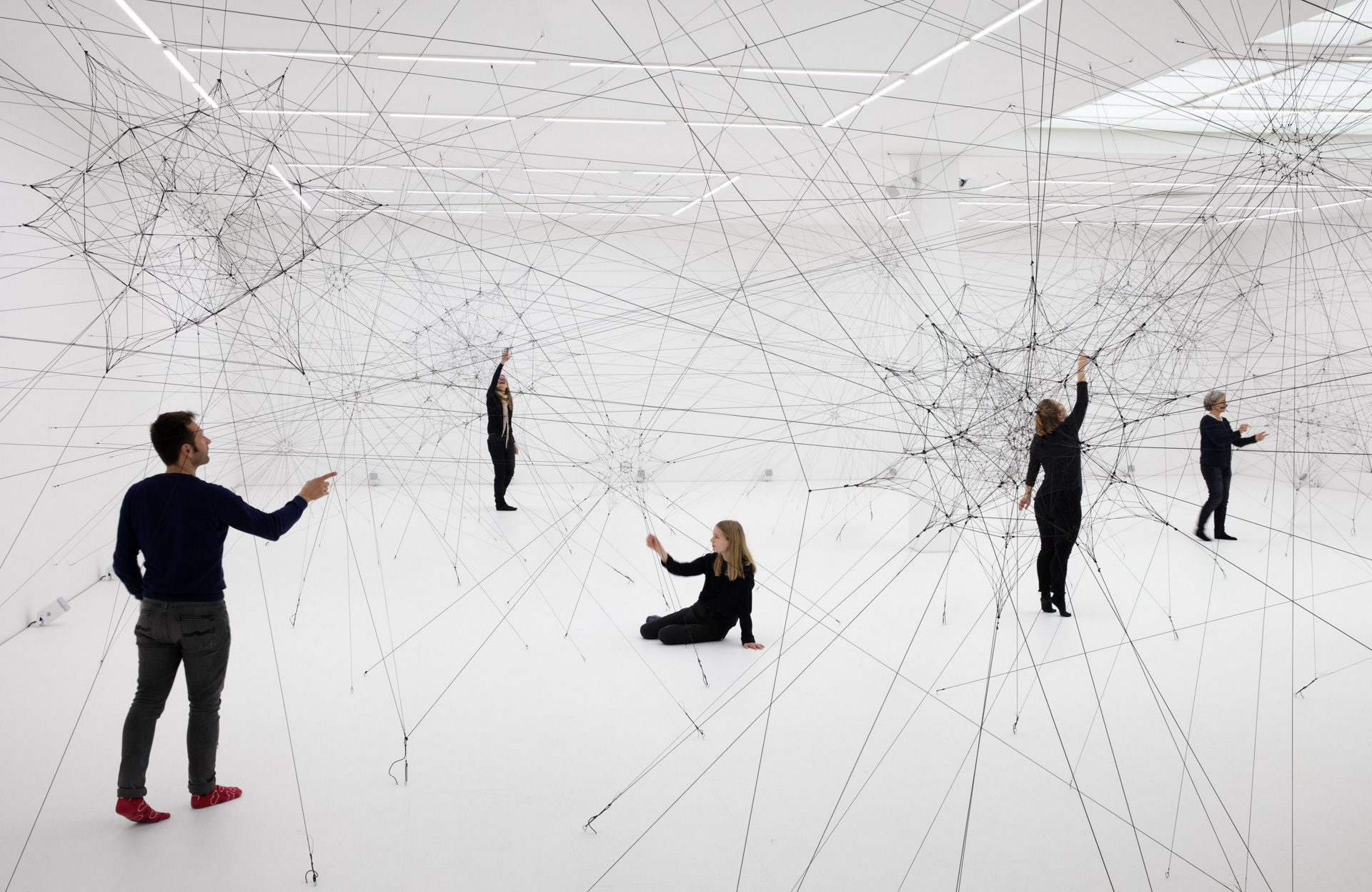
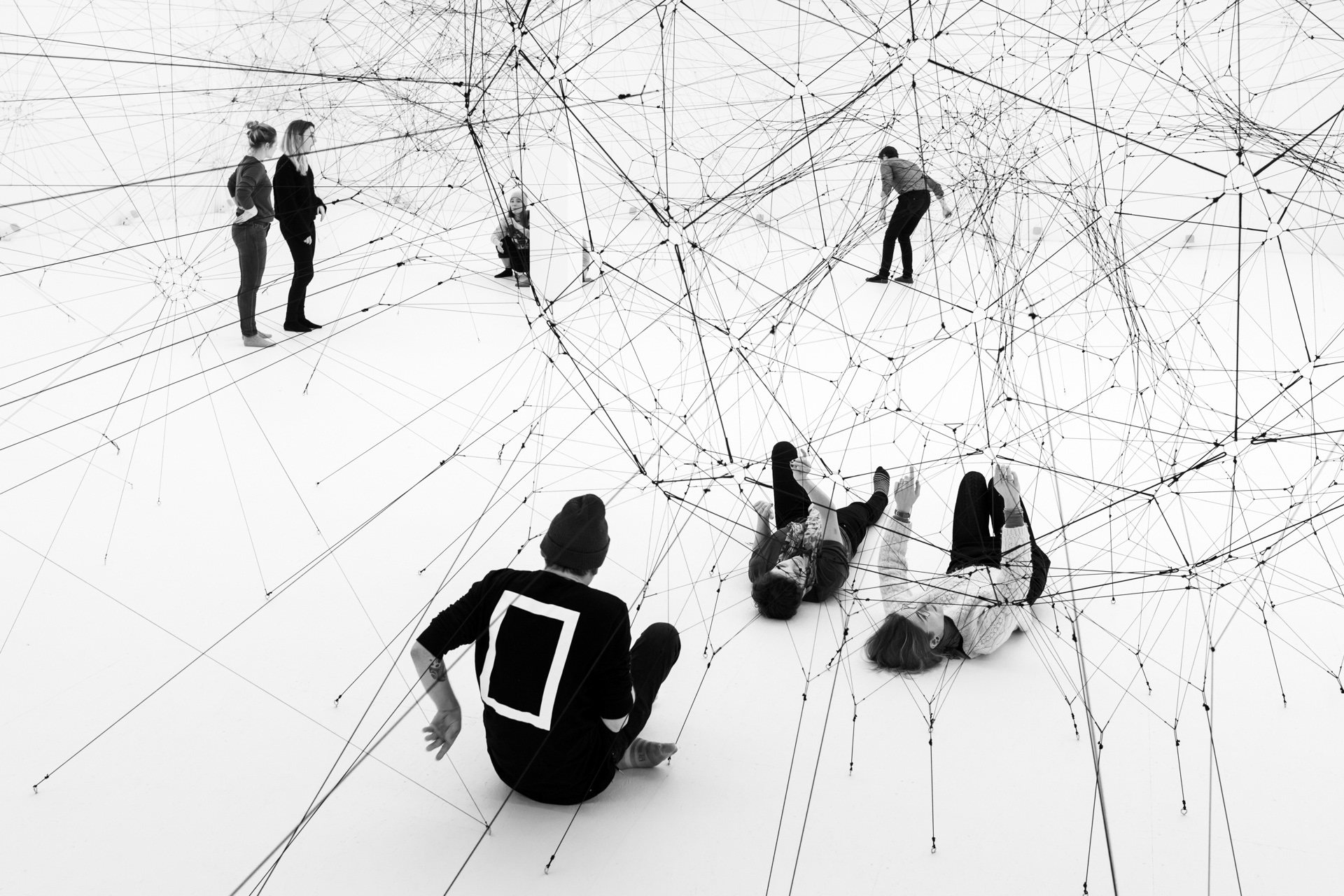
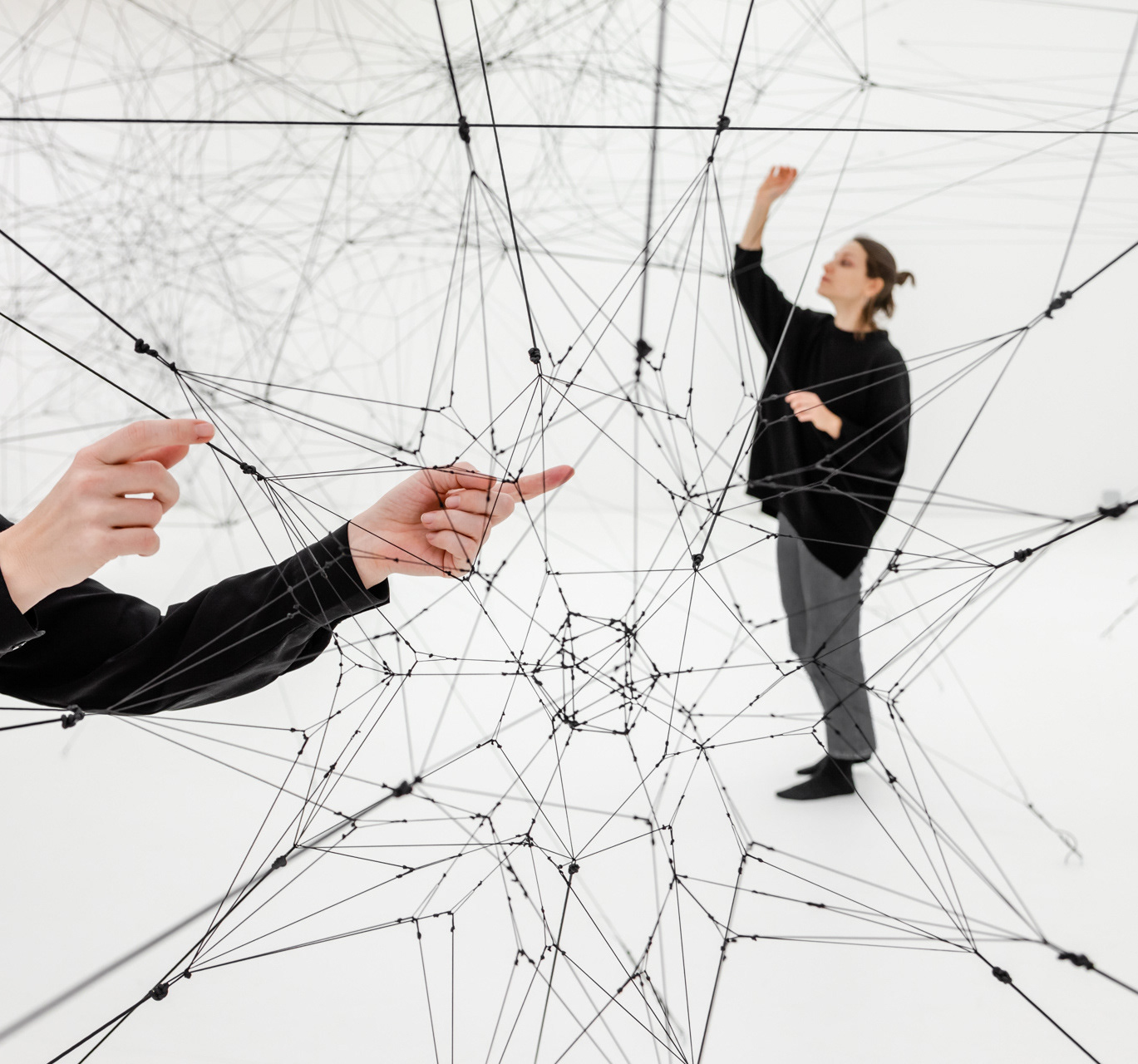
Aerocene 7 / 10.4
By Tomás Saraceno, at St. Charles Church, Vienna, Austria, 2018
Space general dimensions:
H50.0 x 27.0 x 19.0 m / 500 m2
H50.0 x 27.0 x 19.0 m / 500 m2
1. Aerocene 7, 2018
ø7.0 m / Inflatable sculpture / PET Foil transparent and metalized, mirrored acrylic plate, compresor with pressure control, overpressure release valve, PE tube, PES rope
2. Aerocene 10.4, 2018
ø10.4 m / Inflatable sculpture / PET Foil transparent and metalized, mirrored acrylic plate, compresor with pressure control, overpressure release valve, PE tube, PES rope
Aerocene is a scientific project that addresses political, economic, ecologi-cal and social issues. But it is also an artistic project with strong sculptural and architectural qualities. It is a sculpture in the sense of shaping physical materials into three-dimensional form, and as a collaborative project with performative elements it is an invitation to reconsider the space around us while opening up new scopes for thought.
The installation at St Charles Church generates additional possibilities for interpretation. The presence of the spheres inside the tambour of the cupola and the reflections that they create allow a reinterpretation of the architectural space and its impact on the viewer. The volumes, the interior and the unique proportions of St Charles Church designed by the Baroque architect Fischer von Erlach constitute a space where one of the defining characteris-tics of sacred architecture, the uplifting transcendental momentum, is taken to an extreme inside the church building itself.
The enclosed space of St Charles Church also provides the setting for an inter-play between the spheres and the visitors, underlining the exchange of energy between the atmosphere and the Earth’s inhabitants. The breath exhaled and warmth exuded by the visitors impact the microclimate within the church and the spheres, and therefore their movements within the space. In its simplicity, its airiness and its fragility, Aerocene illustrates the delicate equilibrium that exists between life forms and their environment, and reconnects us with ele¬mental sources of energy.
Photographs courtesy of Studio Tomás Saraceno
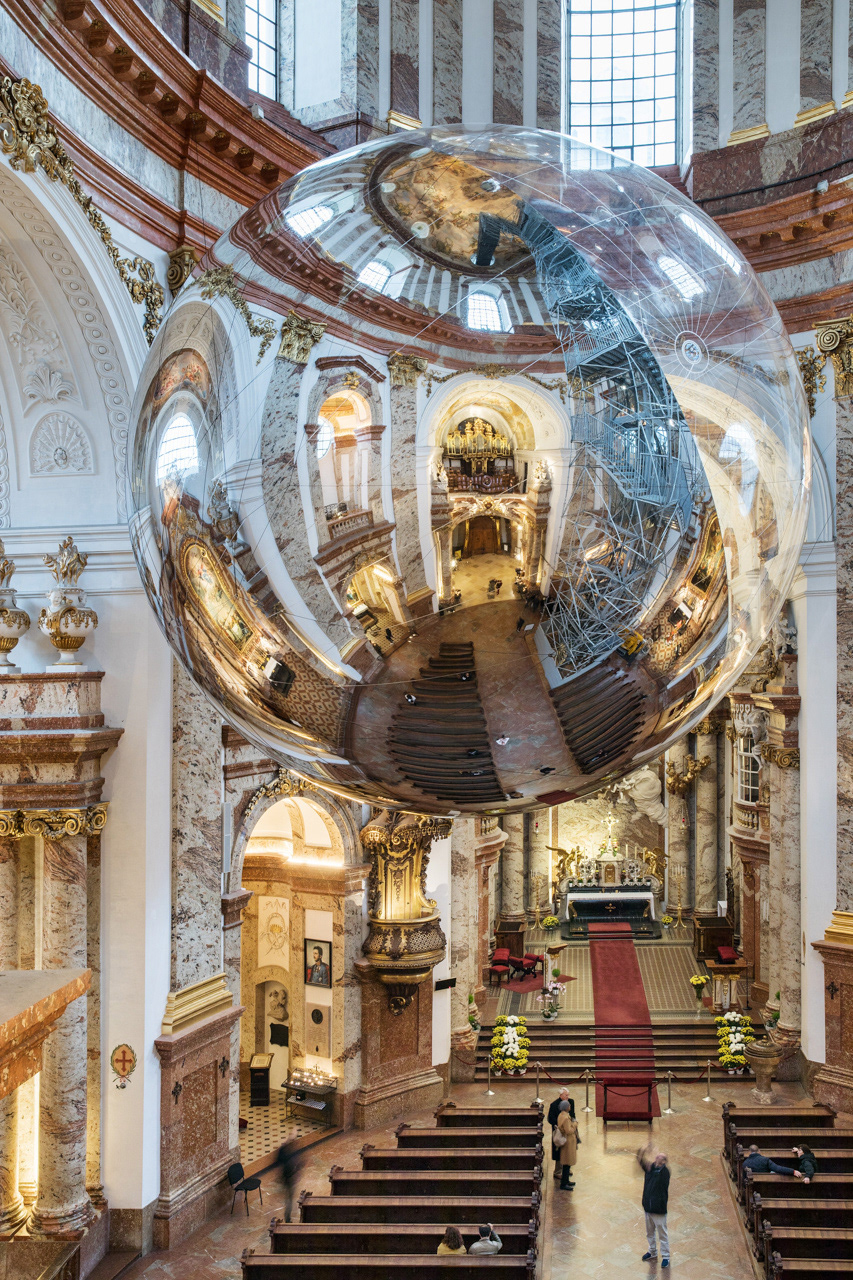
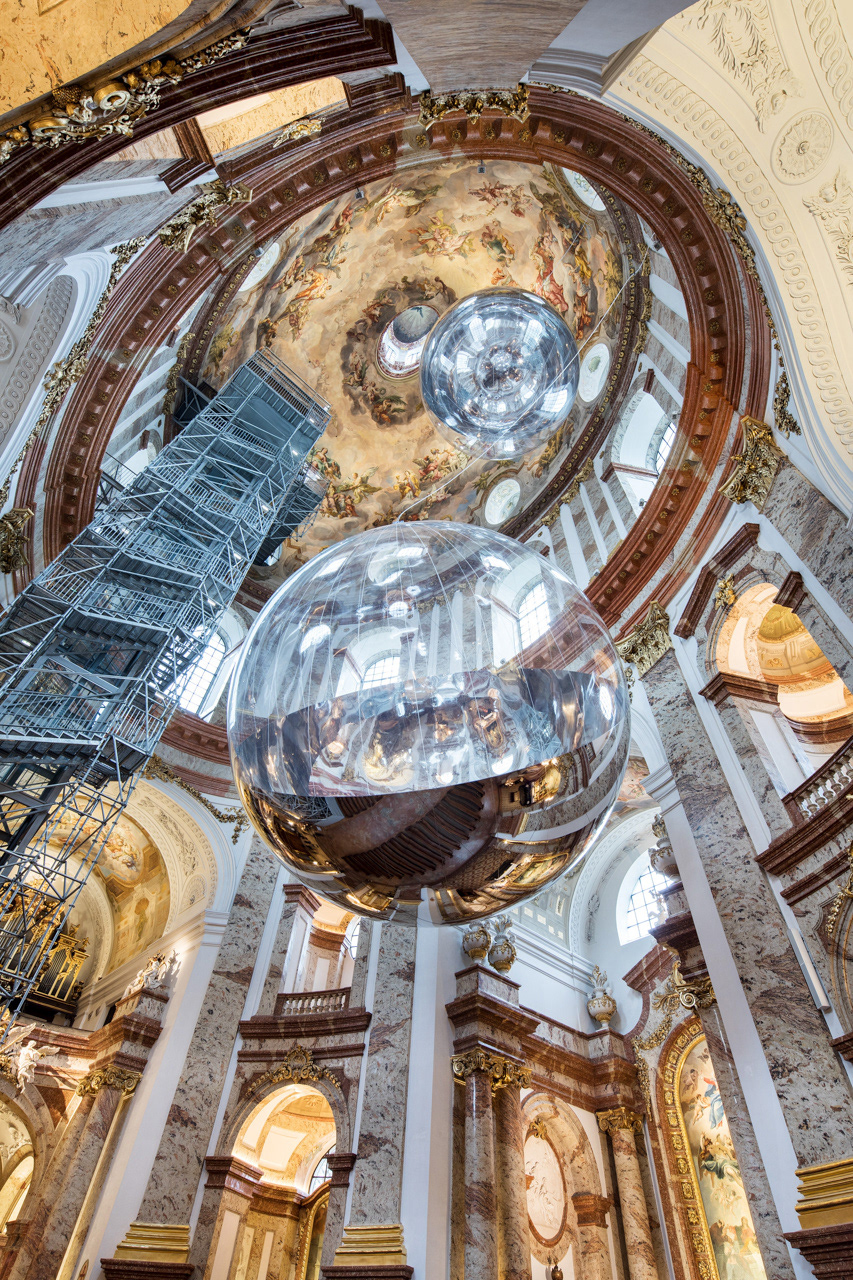

100% cotton
By Rosalie Laurin, Gabrielle Laurin and Sabrine Sidki
for le Carreau du temple, Paris, France, 2016.
Work around the decomposition and metamorphosis of a standard piece of clothing. The 7 hanging volumes are made of hundreds of second-hand white cotton clothes, t-shirts essentially. The repetitive process of cutting through the fabric had been closely studied in order to cut each clothing item in one continuous thread allowing to reach the maximal length in the shorter time possible. The thread were then rolled into balls before being attached to the upper structure.
How the very identifiable shape of a clothing item is decomposed into raw mater to be then reconstructed into new objects themselves identifiable as geometrical volumes.
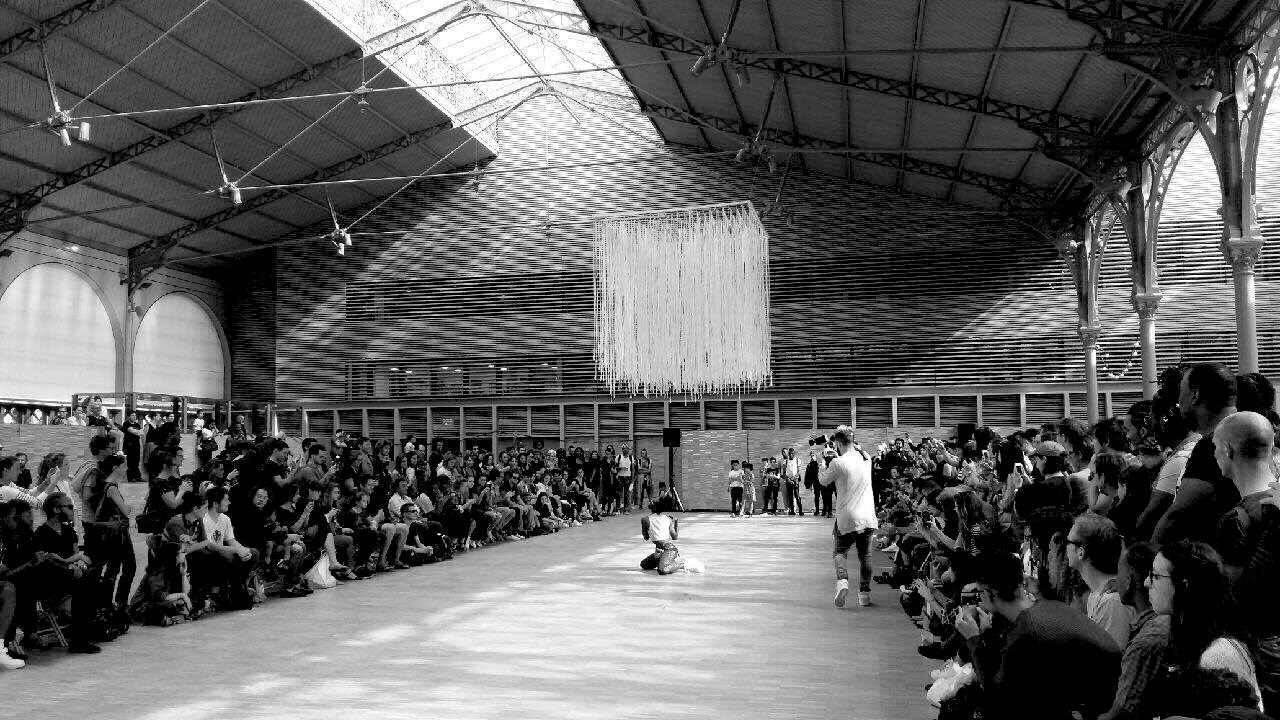
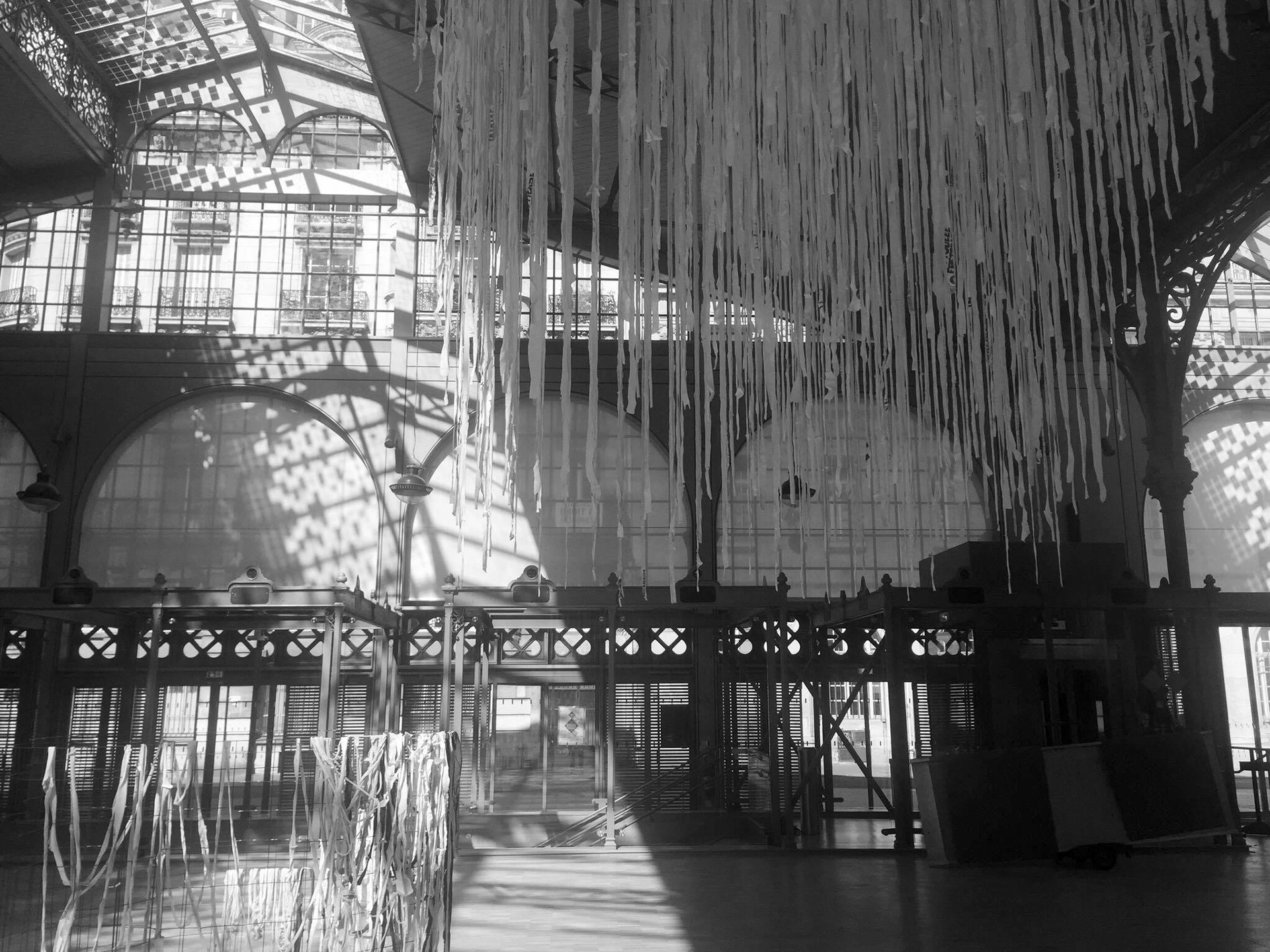

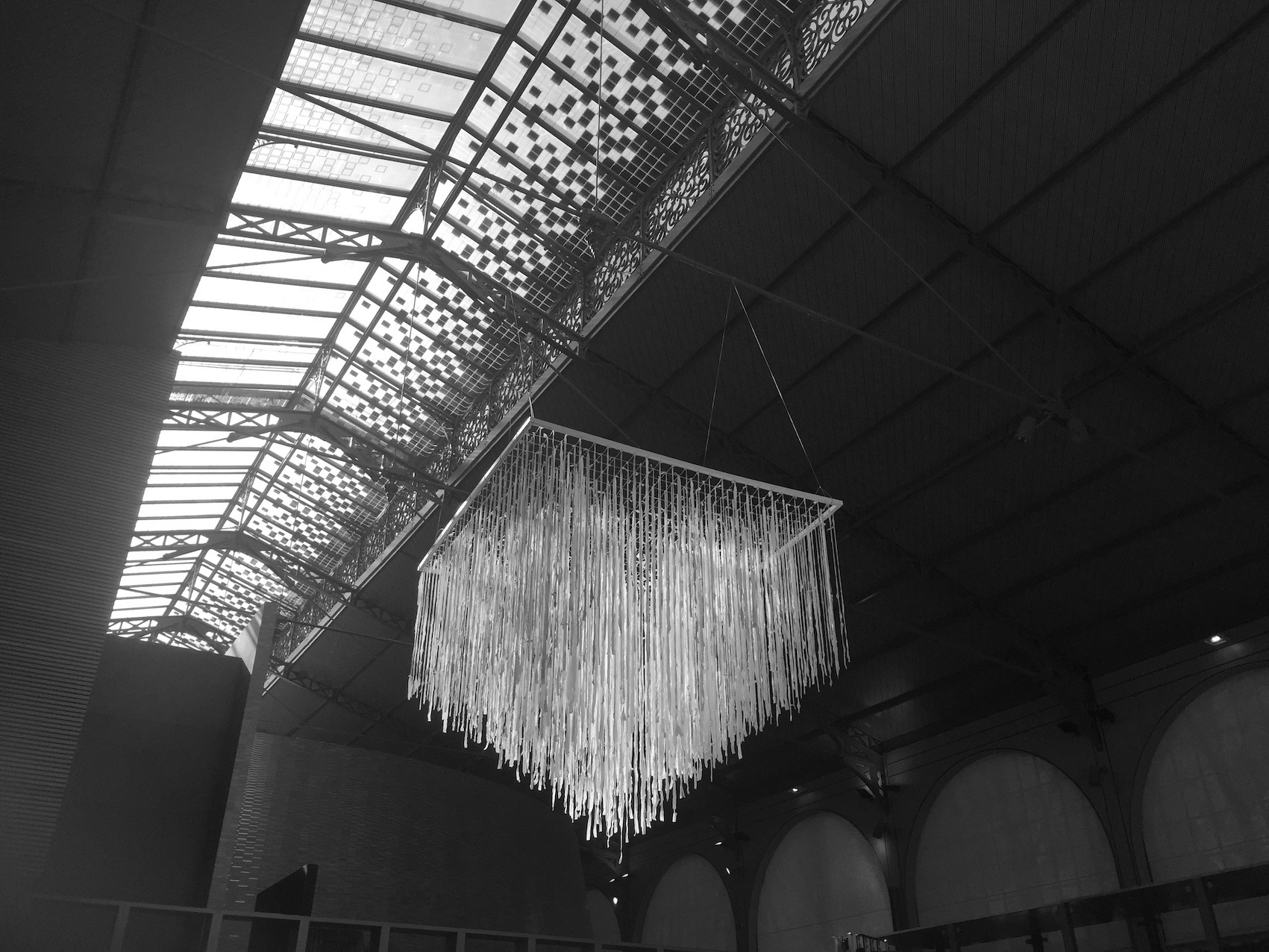

Installation composed of 7 hanging volumes of various dimensions, the largest being 6m x 6m x 6m / Recycled fabric, metallic structure, PES rope / Photographs courtesy of Rosalie Laurin
Entropy
By Rosalie Laurin and Laurent Dubuis for the coGalleries Artist Residency Berlin program, Berlin, Germany, 2015. Sound performance by Nina Pixel.
In the concept of informe (formlessness) introduced by George Bataille, he explains that due to a constant alteration, formlessness has no sharp contours or stable structures making it difficult to be literally distinguish and characterise. When an element is repeated identically, the original version is lost in the repeated versions. How can we shift away from a structured and organised entity towards a loss of boundaries, the state of entropy?
The work presented here is made of some 60 metallic fences disposed in a very tight sequence, almost forced against one another. In some moment, when walking along the work, it become impossible to distinguish the different objects, all grids overlapping in one larger structure, the base elements of the fence is disappearing. The wish is to confuse the stability and continuity of a real space using the automatism of the repetition to create confusion, and to test its related conventional perception in order to offer a sort of disconnection.
Associated website
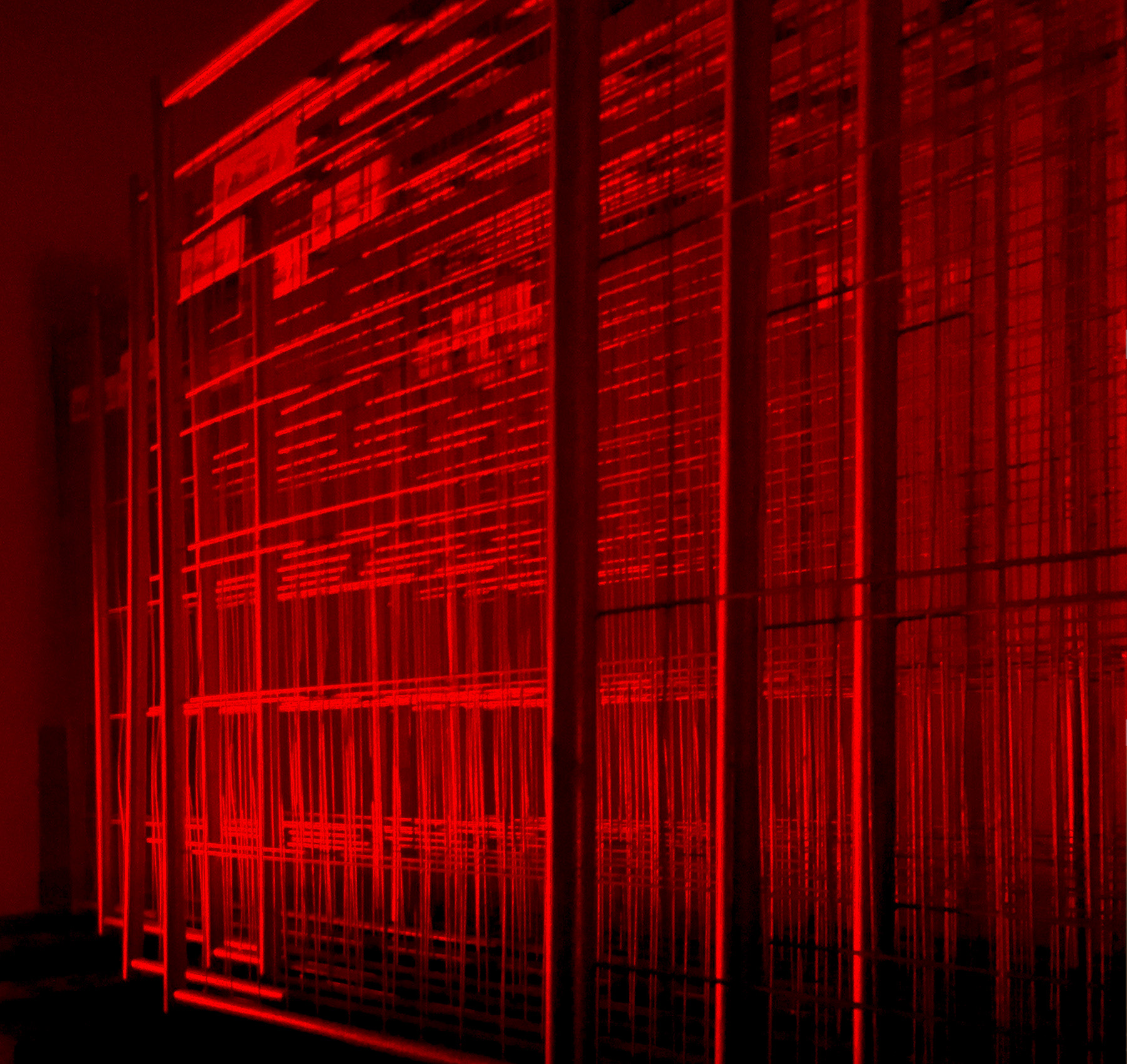
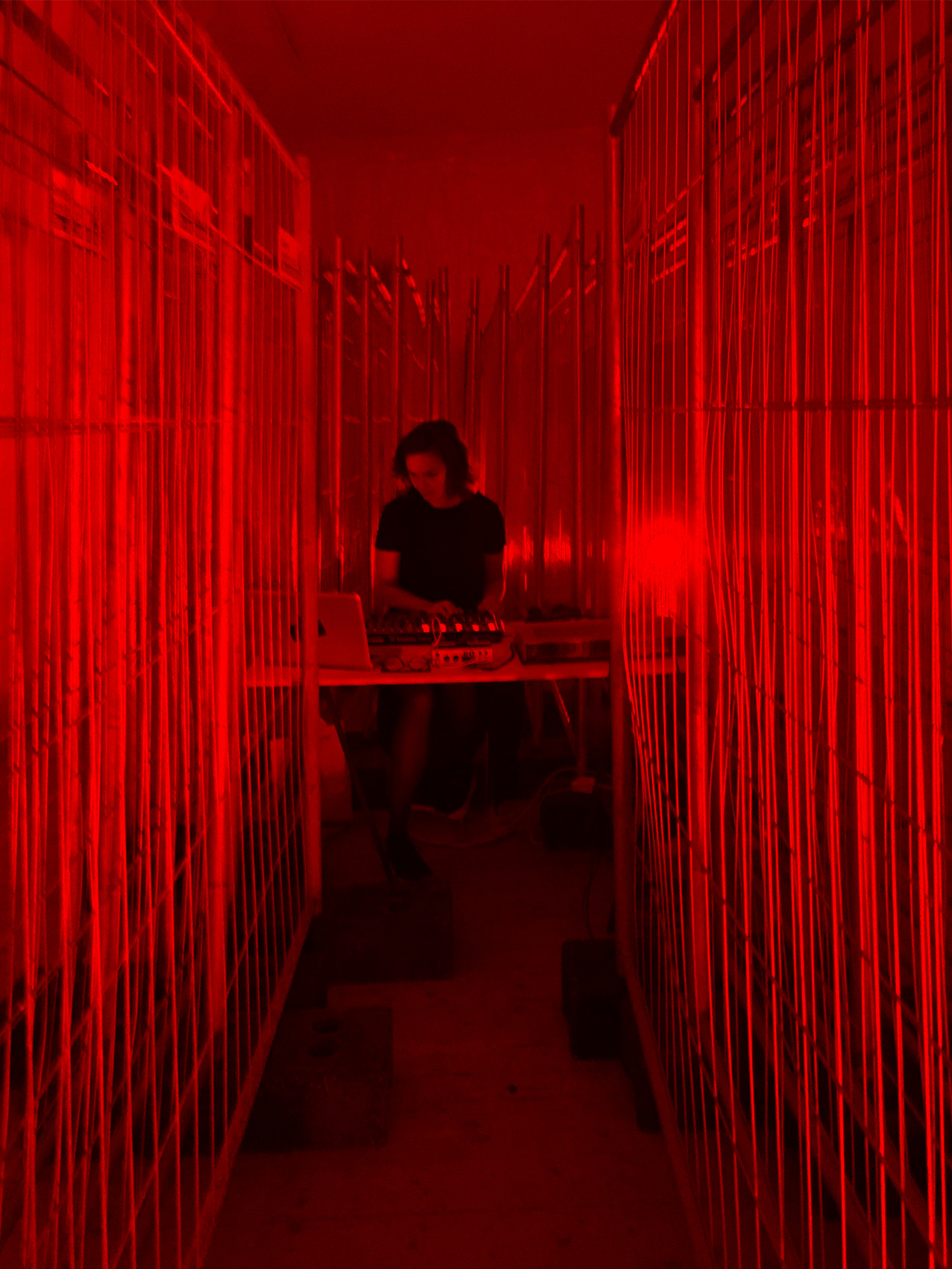
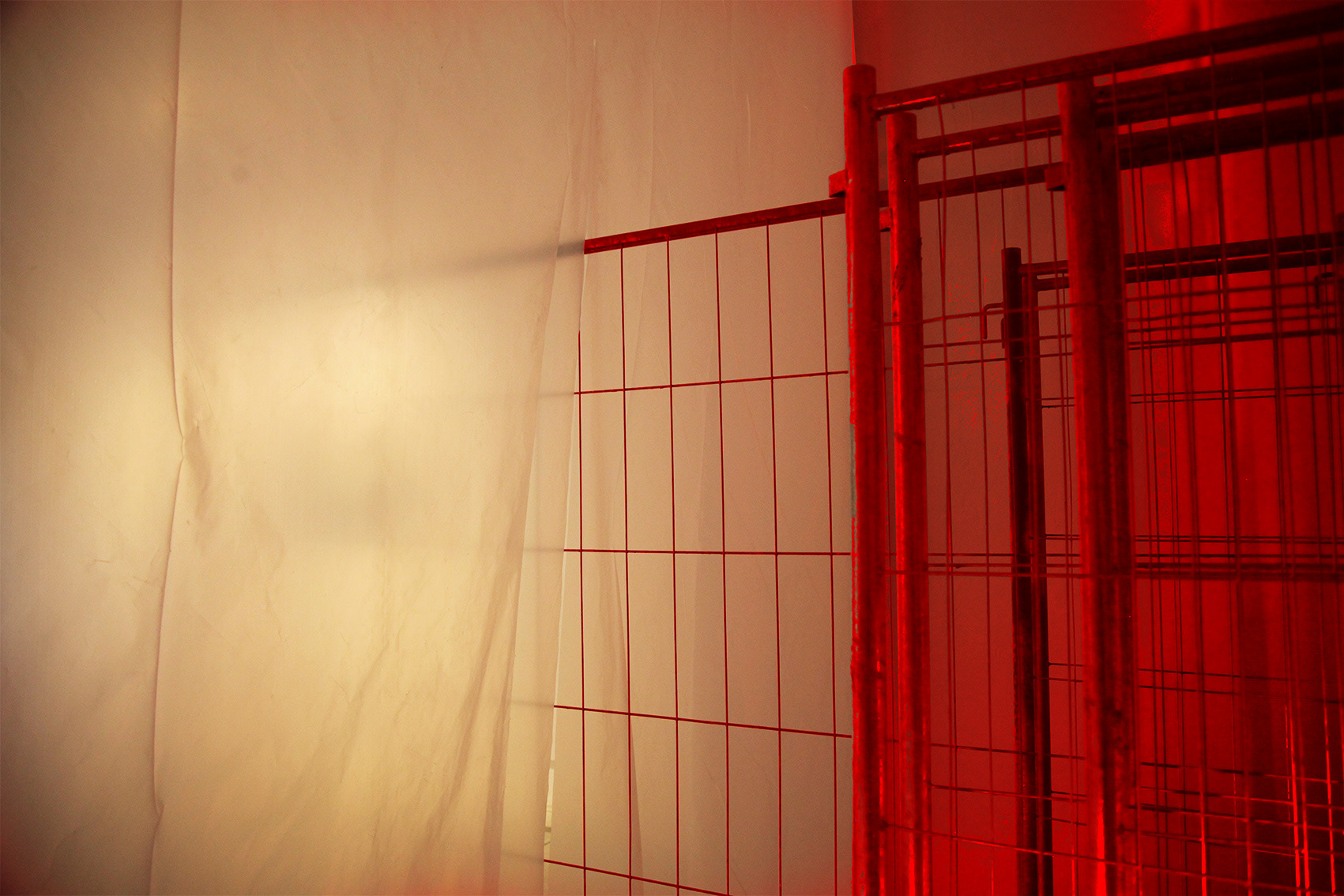


Installation made of 60 metallic fences / Metallic fences, mounting brackets, LED spots. For the live set, Nina Pixel used with pre-recorded noises captured while playing with the resonances of the fences. Photographs courtesy of Rosalie Laurin
Made by numbers
By Hush for an internal project, at Hush studios,
New York, United States, 2015.
New York, United States, 2015.
To create the piece, HUSH used five different metrics to summarise the year 2014: Computers in Use, Images Made, Positive Sentiments, Travel Time, and Late Night Food. After plotting their results on 52 different five-axis graphs, creating a small tower whose amoeba-like curves tell the stories of rough, Red Bull-filled nights and days spent jet-setting on business trips, each week's data was then converted into sounds that are activated by motion detectors within the sculpture's body. When someone runs a hand along each week's worth of data, for example, the sculpture chimes like its layers are the keys of a piano.
The effect is almost like that of a theremin, but instead of vocalising frequency and amplitude based on the player's proximity to the instrument, each note represents a quantified part of HUSH's year.



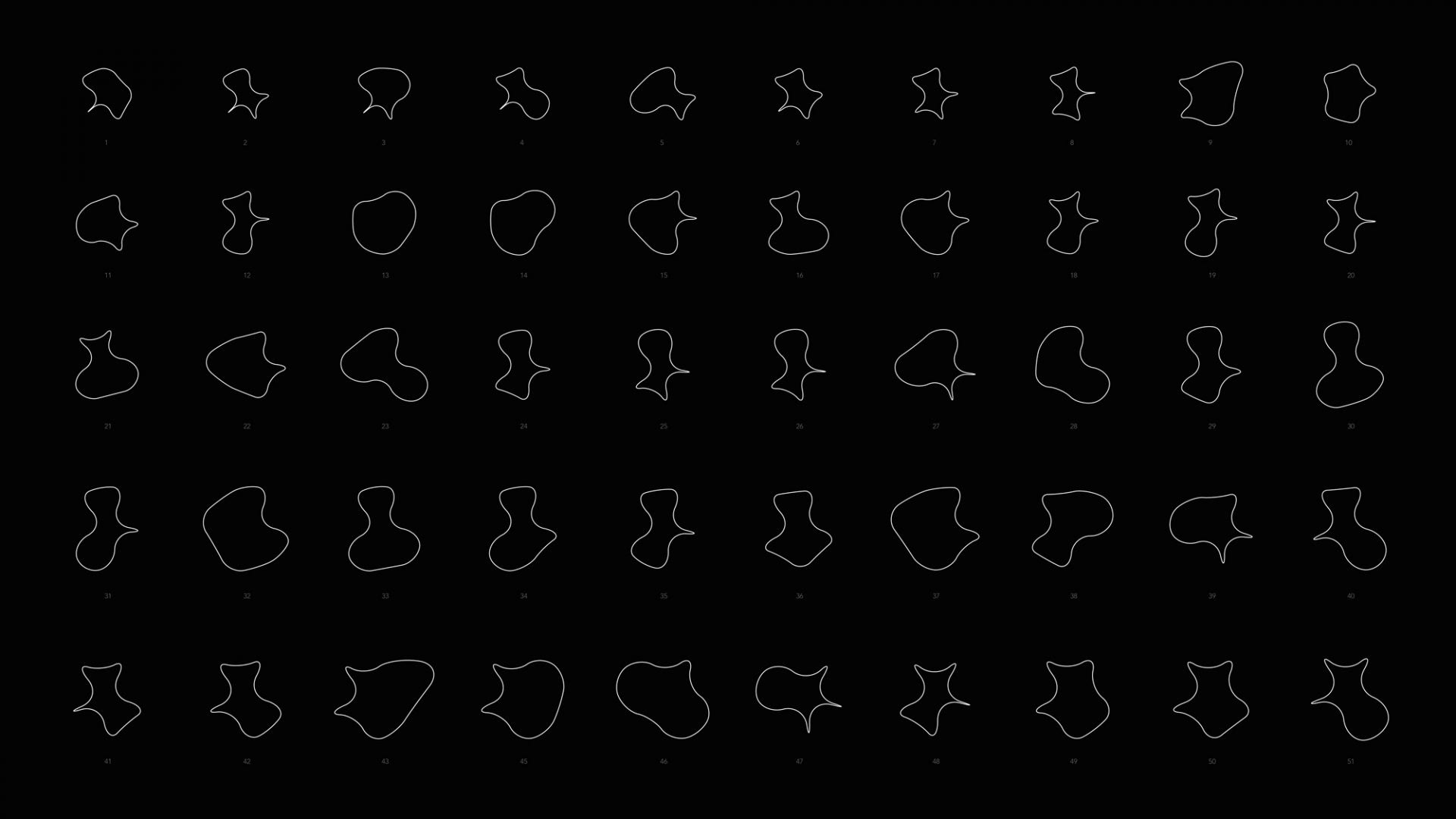
Installation made of 60 layers together around 1,00m high / Laser cut plywood, white paint, motion detectors, computer, software, dmx controlled light. Photographs courtesy of Hush Studios





